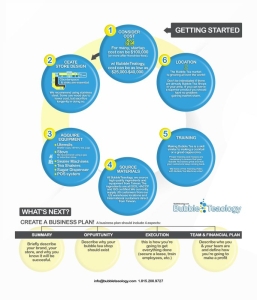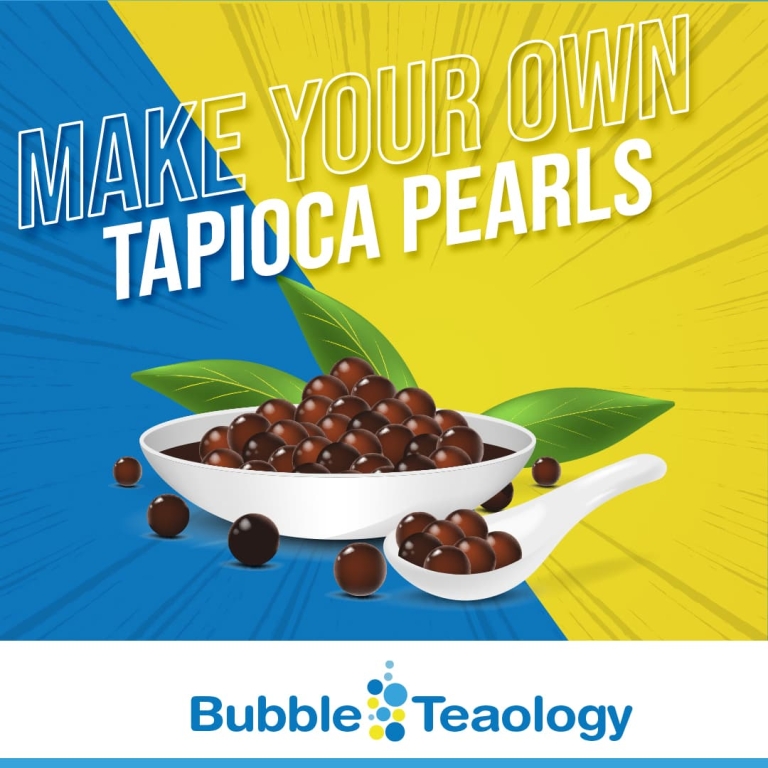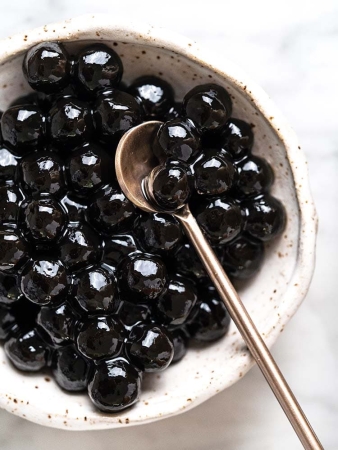

Boba (bubble) tea has become a global sensation. In practically every major city in the United States, you can find many different bubble tea establishments. If you love boba tea, the thought of starting your own bubble tea business may seem quite appealing.
However, starting a bubble tea business (or any business) takes patience, dedication, money, and the tools/equipment necessary to make your dream happen.
One of the most important aspects (if not the most important aspect) of a successful bubble tea business is the quality of the boba pearls. Some people like soft and chewy pearls while others may prefer firmer ones.
Whatever the case may be, if you’re starting a bubble tea shop, you want to have as much control over the quality and production of your boba pearls as possible.
Making your own boba pearls from scratch is a must if you want your bubble tea to be memorable and bring customers flocking back. The best way to make them from scratch is by using a pearl-making machine that lets you make and cut your own tapioca dough pearls.
This will allow you to have control over the texture, size, and flavor. If you buy pre-made boba pearls, you won’t get this level of control.
If you are interested in starting (or already have started) your own bubble tea business and you want to know the benefits of making your own boba pearls, keep reading.

Tapioca starch is used in Bubble Tea to create the chewy tapioca pearls. These tiny, chewy balls are generally black and have a unique gelatinous texture. The production of Boba does not use Gelatin, despite popular belief.
They have a natural white color and are translucent. The black color usually comes from brown sugar or black food coloring.
The pearls are black for aesthetic reasons. This helps to distinguish bubble tea from milk tea.
Tapioca starch is flour that comes from a native South American plant. This plant is the cassava root plant and arrived in Taiwan in the early 20th century during Japanese rule. This gluten-free flour is most popular for making chewy and thick textures in different treats.
Cooked boba in its simplest form doesn’t have much of a taste. For a sweeter taste, it is typically steeped in caramel syrup or mixed with brown sugar.
Bubble tea lovers know that the texture of boba pearls is similar to that of gummy bears or jelly. In Taiwan, Q or QQ is used to describe the texture.
There is not a direct translation for this; however, it’s used to describe how these soft and bouncy pearls feel in your mouth. The cause of this chewy texture is the high percentage of starch found in cassava root. There are other Taiwanese dishes that are described as Q, including:
The use of boba pearls in milk tea is relatively new, appearing in the 1980s. Milk tea has already been around for quite some time and the use of boba pearls in desserts is quite common.
That being the case, it makes sense that combining the 2 became an instant hit.
Nobody is certain as to who actually first made bubble tea; however, two stores claim it was them. Neither one of these stores won the patent lawsuit, allowing many stores to make their own version of the popular drink.
Bubble tea shops used the nickname “boba” in order to advertise that they had bigger boba balls than their competitors.
Synonyms for Tapioca pearls are boba balls, pearls, or simply boba.
There are many advantages to making your own pearls with a pearl-making machine. First of all, it will help you stand out amongst your competitors. Currently, the majority of bubble tea shops buy pre-made boba.
This means that many stores end up using the same pearls, taking away from the uniqueness that comes with making your own pearls.
You want a machine that lets you make and cut your own tapioca dough into balls. Using a pearl-making machine allows you to make custom pearls with unique flavors, like matcha pearls or mango boba.
Making custom flavors is vital to the success of an up-and-coming boba tea shop.
When you use a pearl-making machine, you’ll be able to decide how you want to make your pearls black. Use black food coloring or brown sugar to do this.
Here are some other ways to make your pearls one-of-a-kind.
After cooking your pearls, they will likely be larger in size. Making your pearls around 1.5 cm big is most common. Pearls of this size or smaller are more likely to maintain a nice consistent texture throughout.
If you make pearls that are too large, they may not be ideal for bubble tea. Likewise, you could still use them for other delicious treats.
Having a pearl-making machine allows you to experiment with size and find what you like best.
A huge benefit of making your own pearls is having control over their texture. To make your Tapioca Pearls have that bouncy texture, soak them in ice.
An ice bath will stop the cooking process instantly, making the pearls firm up slightly. The longer you leave them in an ice bath, the firmer they will become.
When you make your own boba pearls, you’ll be able to control how sweet they are. Experimenting with different amounts of brown sugar will help you find what you think your customers will like best.
Using additional water in the pearl-making process can reduce the sweetness.
Of course, one of the biggest benefits of using a pearl-making machine is the fact that you won’t have to wait on shipments of pre-made boba pearls. The supply-chain shortage has had an impact on virtually every industry, including the boba tea industry.
By making your own pearls, you can ensure you won’t have problems caused by the supply-chain shortage.
With our Automatic Tapioca Pearl Maker, you can make your own Tapioca Pearls in your store to give your customers the freshest possible bubble tea! This machine is stainless steel and 100% made in Taiwan.
It automatically feeds the tapioca starch into the machine to produce 9mm tapioca pearls, and you can customize your own tapioca pearls recipe to give your customers different colors and flavors!
Interested in starting a bubble tea business? We can help.
Check out our available products here. Also, check out this very important article 5 Reasons Bubble Tea Shops Fail
Copyright © 2023 BubbleTeaology. All Rights Reserved.